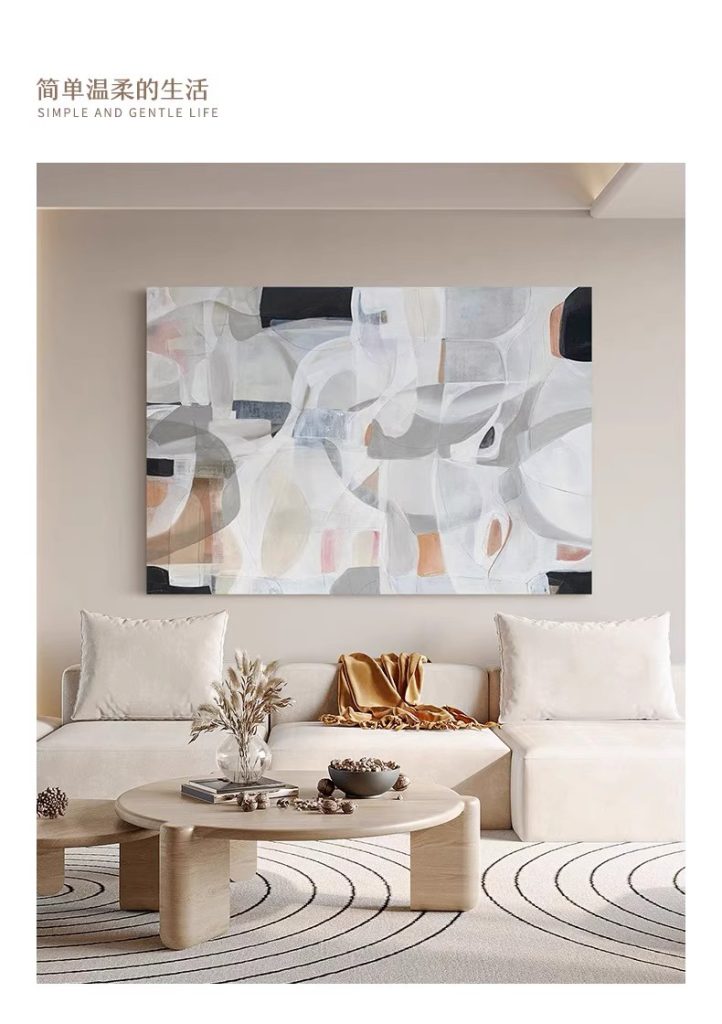Exploring the Fusion of Tech Aesthetics and Hand-Painted Oil Artistry
The intersection of technology and traditional art forms has birthed a dynamic visual language that challenges conventional boundaries. Hand-painted oil art, once rooted in classical techniques, is now evolving to incorporate futuristic elements, creating a genre that resonates with modern sensibilities. This exploration delves into the key components that define this emerging style, from color palettes to thematic narratives.
Digital Inspiration Meets Organic Brushstrokes
At the heart of this fusion lies the balance between mechanical precision and human imperfection. Artists often begin by studying digital designs, such as circuit patterns, holographic gradients, or AI-generated textures, and reinterpret them through oil paints. The result is a juxtaposition of sharp, geometric lines against the soft, blended edges characteristic of traditional brushwork. For instance, a canvas might feature a metallic grid rendered in thick impasto strokes, where the paint’s texture mimics the roughness of 3D-printed surfaces. This interplay between digital inspiration and analog execution creates a tactile depth that screens cannot replicate.
Color Theory for a Cybernetic Era
The choice of colors plays a pivotal role in evoking a tech-inspired atmosphere. Neon hues like electric blue, cyberpunk pink, and luminous green dominate, often paired with monochromatic backgrounds to enhance contrast. Metallic tones—silver, chrome, and gold—are applied sparingly to simulate reflective surfaces, while iridescent pigments shift under light, mimicking the behavior of augmented reality interfaces. Artists also experiment with layering translucent glazes to achieve a glowing effect, reminiscent of backlit screens or bioluminescent organisms. These choices not only reflect technological themes but also create an otherworldly ambiance that draws viewers into the artwork.
Themes of Human-Machine Symbiosis
Beyond aesthetics, this style explores deeper narratives about humanity’s relationship with technology. Paintings might depict fragmented figures merging with digital interfaces, suggesting a loss of individuality in the digital age. Alternatively, abstract compositions could use circuit-like patterns to symbolize the interconnectedness of global networks, with organic shapes breaking through to assert human presence. Some artists incorporate robotic motifs, such as gears or servo motors, rendered in hyper-realistic detail to contrast with the fluidity of human forms. These themes invite viewers to reflect on the ethical and philosophical implications of advancing technology.
Dynamic Composition Techniques
To convey motion and energy, artists employ unconventional compositional strategies. Diagonal lines and asymmetrical layouts create a sense of instability, echoing the rapid pace of technological change. Negative space is strategically used to highlight focal points, such as a solitary figure amidst a chaos of digital noise. Additionally, the use of perspective is often distorted, with elements appearing to recede into infinite depths or float in zero gravity. This approach not only adds visual intrigue but also reinforces the idea of transcending physical limitations through technology.
The Role of Texture in Bridging Eras
Texture serves as a bridge between the old and the new, with artists deliberately preserving the tactile qualities of oil paint while incorporating modern references. For example, a painting might feature a smooth, almost glass-like finish for areas representing digital screens, contrasted with rough, impasto strokes for mechanical components. Some creators even embed small electronic components, like LED lights or conductive threads, into the canvas to create interactive elements that respond to touch or movement. These innovations blur the line between static artwork and functional technology, offering a multisensory experience.
By merging the precision of digital design with the expressive potential of oil painting, this genre redefines what it means to create art in the 21st century. It challenges viewers to see technology not as a replacement for tradition but as a catalyst for innovation, pushing the boundaries of both mediums into uncharted territory.
